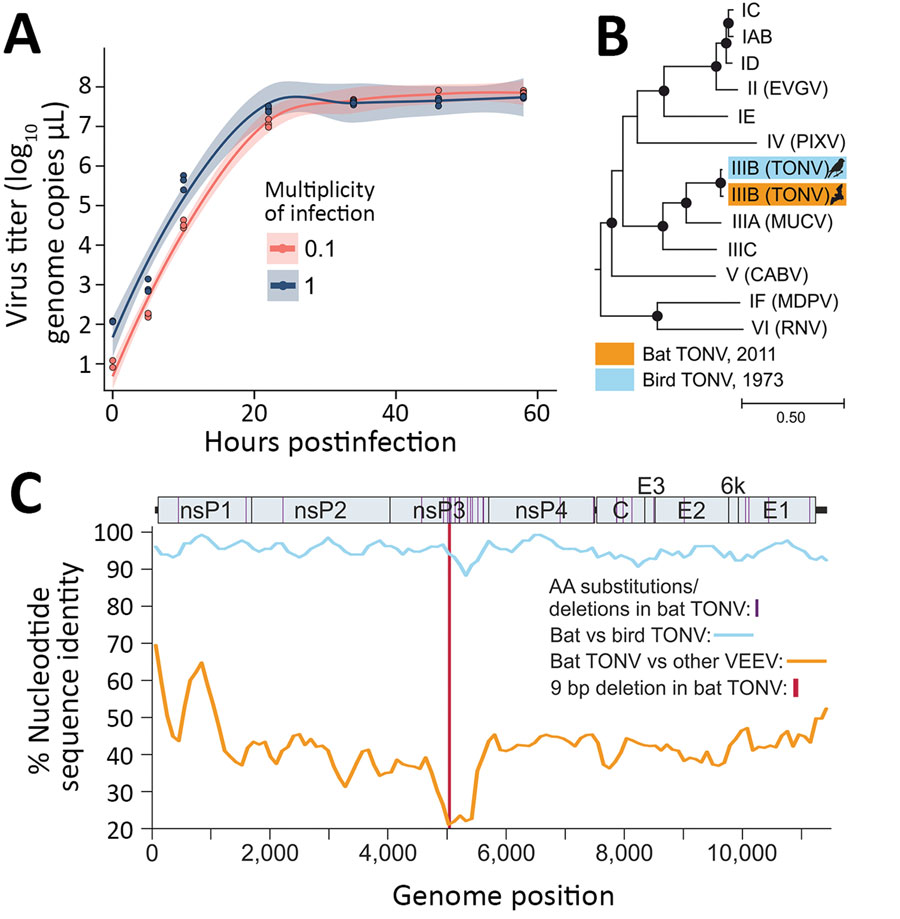Volume 27, Number 4—April 2021
Dispatch
Venezuelan Equine Encephalitis Complex Alphavirus in Bats, French Guiana
Figure 2

Figure 2. Characterization of bat TONV in study of VEE complex alphavirus in bats, French Guiana. (For additional discussion of methods, see Appendix.) A) Growth kinetics of the new bat TONV on Vero E6 cells in 24-well plates. (B) Maximum-likelihood phylogeny of TONV and members of the VEEV antigenic complex based on full genome nucleotide sequences. Eastern equine encephalitis virus (NC_003899) was included as an outgroup. Viruses are named according to the VEEV subtype classification: IAB/IC/ID/IE/IIIC, Venezuelan equine encephalitis virus; IF, Mosso das Pedras virus; II, Everglades virus; IIIA, Mucambo virus; IIIB, Tonate virus; IV, Pixuna virus; V, Cabassou virus; VI, Rio Negro virus. Bootstrap support above 90% is highlighted by filled circles. C) Percentage nucleotide sequence identity between TONV isolates and other viruses of the VEE antigenic complex. Consensus preparation was done using Geneious 9.1.8 (https://www.geneious.com) by mapping to the TONV CaAn 410d complete genome (GenBank accession no. NC 038675.1) as reference. The median coverage for consensus preparation was 5,504 (range 5–11,605). TONV, Tonate virus; VEE, Venezuelan equine encephalitis.
1These authors contributed equally to this article.